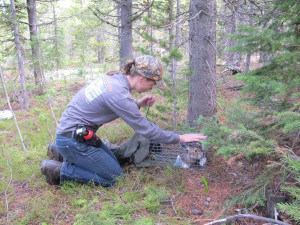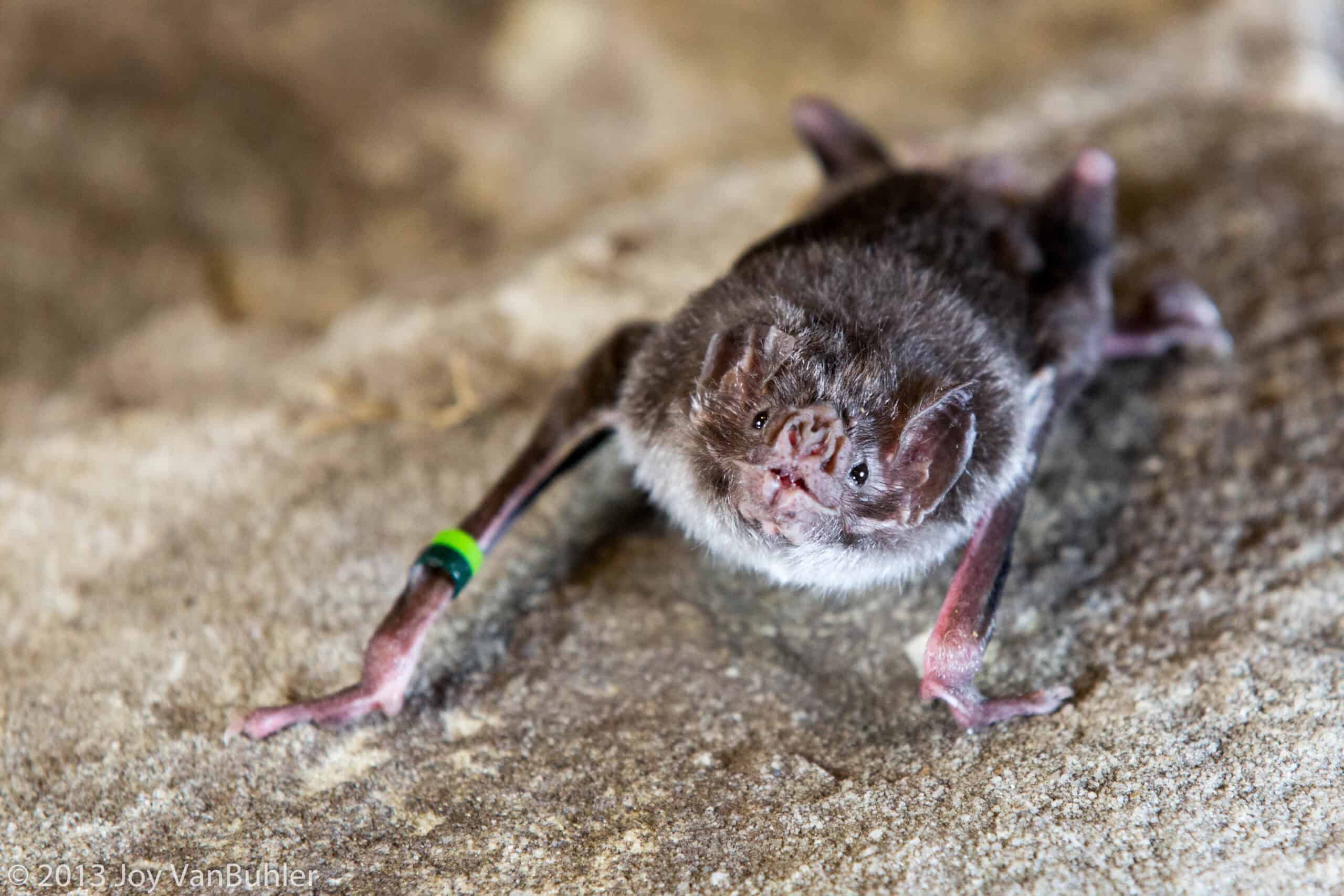Share this article
Changing fur color determines fate of snowshoe hares
A white ball of fur is easy to spot against a stark brown backdrop. That’s what makes it so easy for predators to spot snowshoe hares (Lepus americanus) when snow comes late or leaves earlier than expected.
“They’re so obvious, like lightbulbs jumping around on dark snowless forest floor,” said Marketa Zimova, a Ph.D. student at North Carolina State University and lead author of a study on hares’ camouflage published in Ecology Letters. “Our research shows that this does kill them.”

Zimova captures a snowshoe hare before attaching a radio collar to it at the Gardiner study site in Montana.
©Dr. L. Scott Mills Research Photo
Snowshoe hares camouflage themselves from a wide range of boreal forest carnivores such as weasels, wolves and raptors by changing their coat colors from brown in the summer to white in the winter. However, due to climate change, a phenomenon Zimova calls camouflage mismatch occurs in which hares are unable to quickly adjust to the unpredictable snow or absence of snow. This lack of ability to adjust will have much worse consequences in the future as snow will continue to decrease, Zimova said.
As part of their study, Zimova and her coauthors trapped hares at two sites in Montana and fitted them with radio collars. They then located the hares every week and recorded their coat color and the presence of snow around them in order to quantify mismatch. They also took note of whether or not the snowshoe hares were alive.
The team found that there was a 7 percent drop in the hares’ weekly survival rate when there was a camouflage mismatch. However, Zimova said that there’s some variation between individuals, and natural selection might allow hares to adapt through evolution. “The conservation implication is to promote evolution,” she said. This can be by maintaining large populations and connectivity between populations in order to promote genetic variation, according to Zimova.
“This is the short-term solution,” Zimova said. “Ultimately, we want to mitigate climate change.” Meanwhile, in Alaska, climate change is having a different effect on snowshoe hares. A recent study shows snowshoe hares in the North Slope of Alaska are expanding as a result of climate change and an increase in shrub habitat.
While snowshoe hare populations appear to be currently stable at the study sites in Montana, Zimova says it’s possible they will decline toward extinction by the end of the century. “We can help to prevent that if we foster evolutionary rescue,” she said. Zimova plans to continue studying camouflage mismatch in mountain hares in Scotland and arctic foxes (Vulpes lagopus) in Sweden.
Header Image: A mismatched snowshoe hare. ©Dr. L. Scott Mills Research Photo








